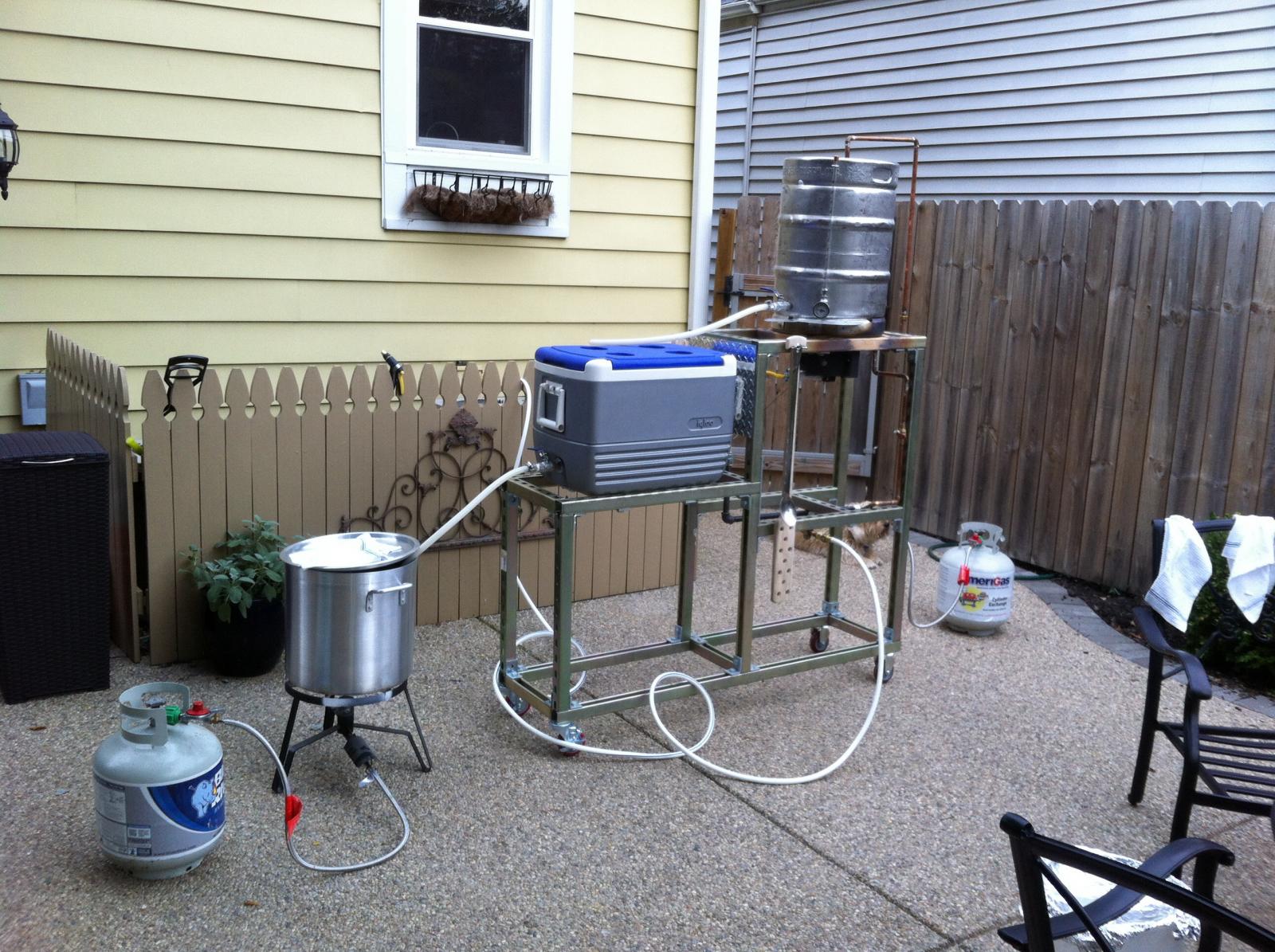So take a look at my current setup; how big a deal would it be to upgrade what i have to using pumps, etc.? My SWMBO is looking for xmas ideas for me!




RIMS is Recirculating Infusion Mash System. In its simplest form, it consists of taking mash water from the bottom of the mash tun (usually the ball valve that is used to drain it) and pumping it up and back into the top of the mash tun to equalize the temperatures within. Some sort of diffusion device is usually used at the inlet to avoid disturbing the grain bed. Sometimes folks run the wort through a chamber containing a heating element so the mash temperature can be regulated.
HERMS is Heat Exchanger Recirculating Mash System. Here, the wort taken from the mash tun is pumped through a heat exchanger, usually a coil suspended in the hot liquor tank. The wort is heated by the HLT water as it passes through and, again, temperature regulation can be achieved in addition to the temperature equalization from recirculation.

Enter your email address to join: